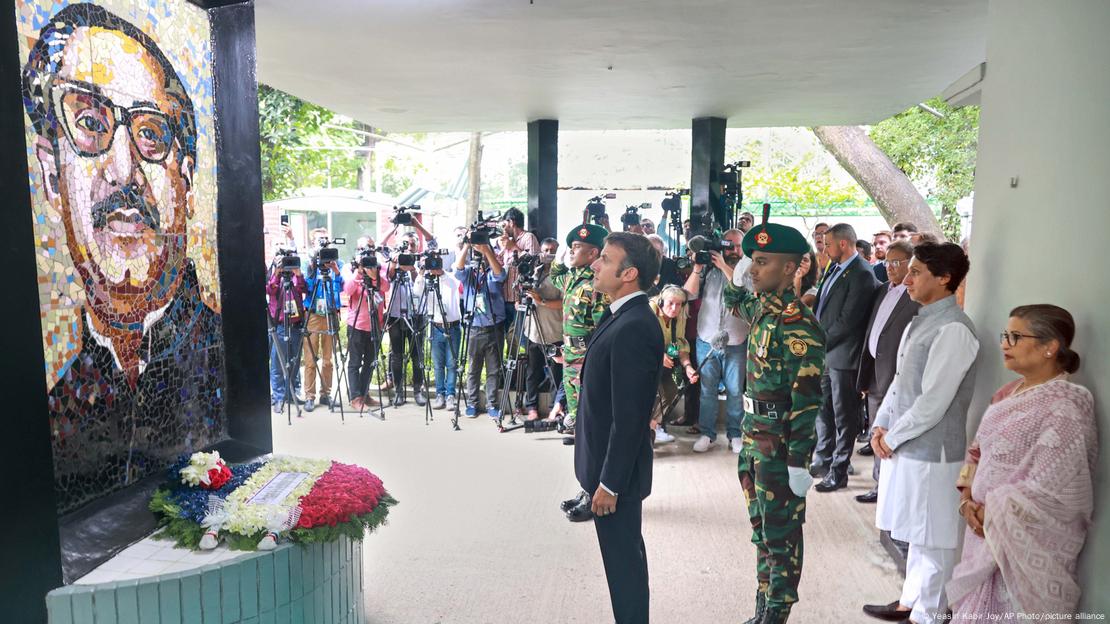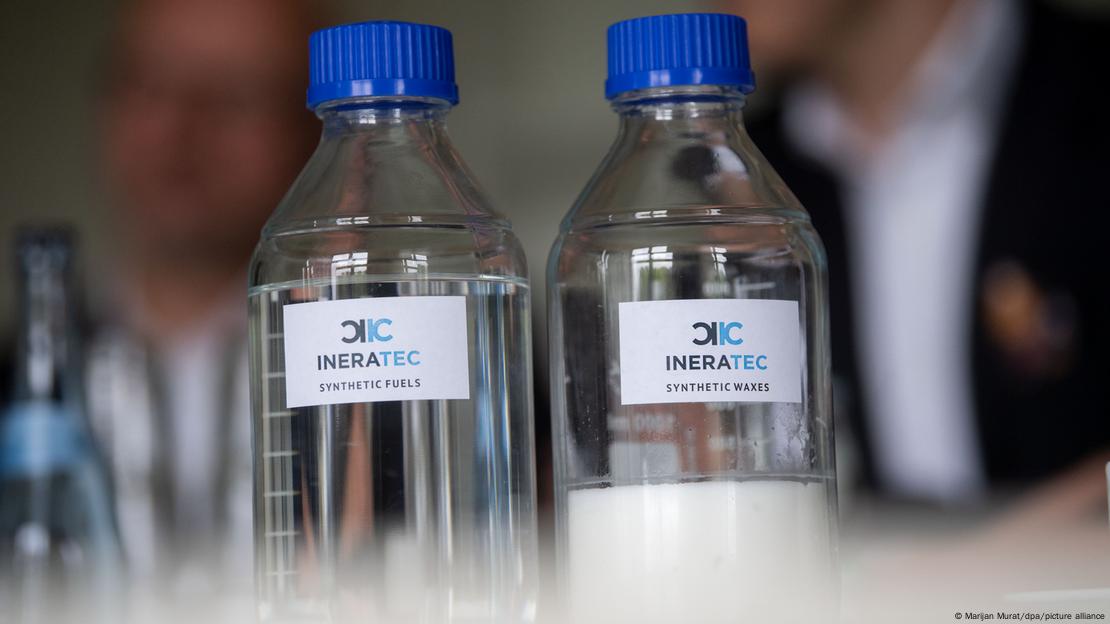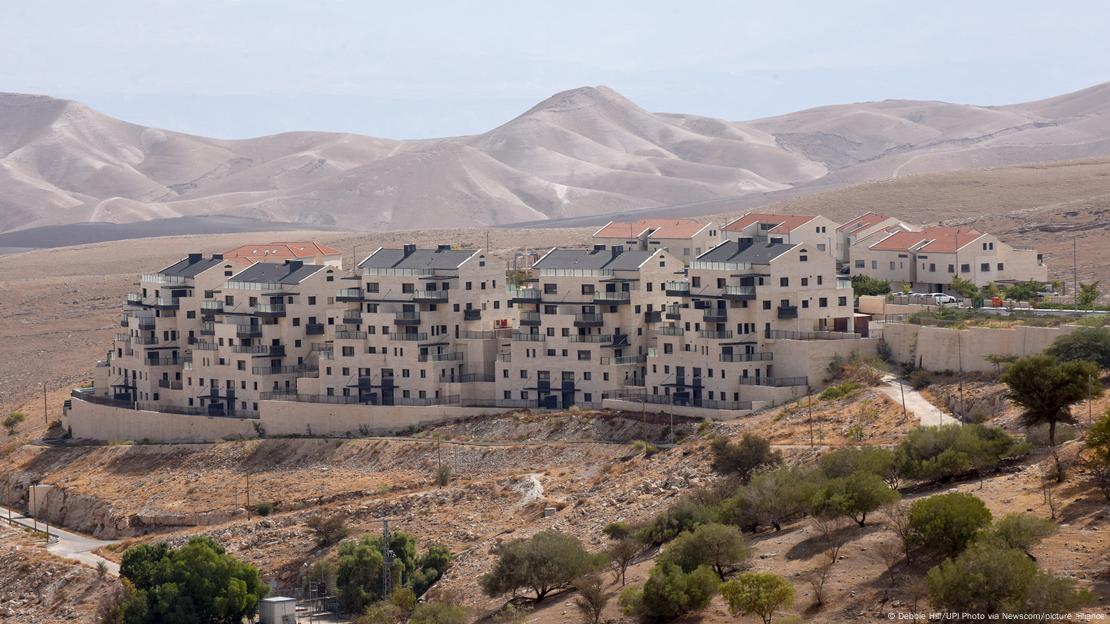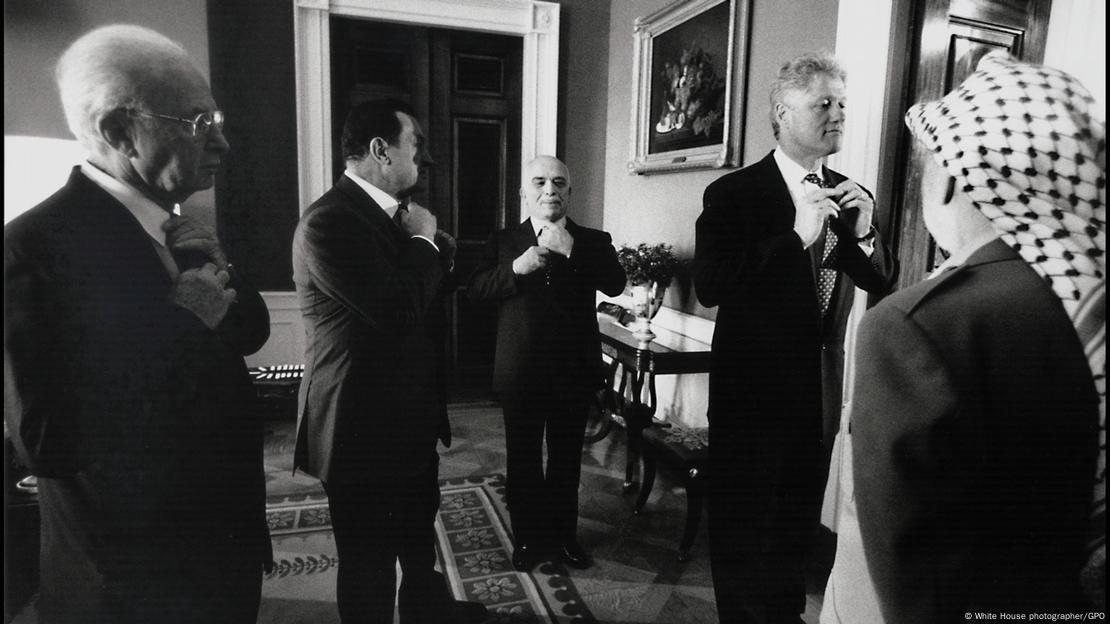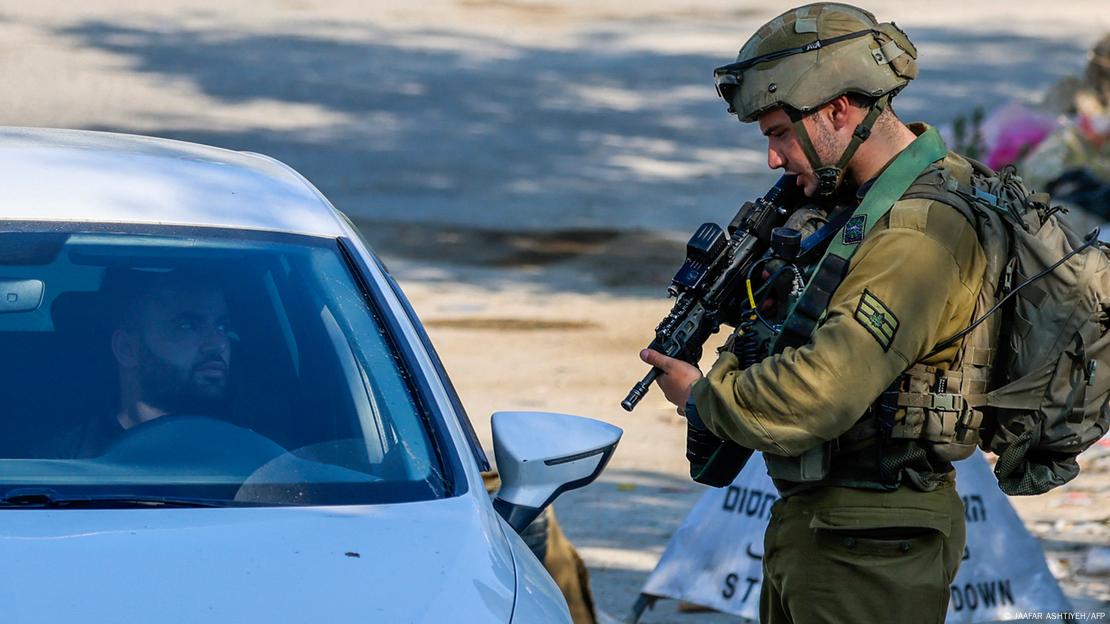Strasbourg (France) (AFP) – Brussels will investigate Chinese state subsidies for electric cars, the EU chief said Wednesday, vowing to defend Europe's industry from unfair competition.

But some EU member states, including Germany, are wary of angering Beijing, since they rely on trade relations with China, although Berlin welcomed the probe Wednesday.
European Commission president Ursula von der Leyen announced the anti-subsidy investigation, vowing to defend Europe's manufacturers.
"Global markets are now flooded with cheaper Chinese electric cars. And their price is kept artificially low by huge state subsidies," von der Leyen said, during a speech at the European Parliament in Strasbourg.
The probe could lead the European Union to impose duties on those cars that it believes are unfairly sold at a lower price, thereby undercutting European competitors.
"Europe is open for competition but not for a race to the bottom," the European Commission president said.
A Chinese official accused the EU of "protectionism" in a social media post.
Pointing to information from the European Automobile Manufacturers Association (ACEA), Wang Lutong, director-general of the Chinese foreign ministry's department of European affairs, said "many EU members subsidise their electric vehicle industries".
"In what position is the commission to launch anti-subsidy investigation into electric vehicles from China? This is nothing but sheer protectionism," he said.
French Finance Minister Bruno Le Maire said the probe was a "very good decision" during a visit to Berlin. Germany's Economy Minister Robert Habeck said it showed the "right attitude" and was about tackling "unfair competition".
Paris has already announced measures that would provide subsidies for new electric cars based on the manufacturers' emissions output. This would be more difficult for Chinese cars since their production often relies on coal-powered electricity.
'Distorted competition'
European car makers also hailed the EU's investigation as a "positive signal".
"The European Commission is recognising the increasingly asymmetric situation our industry is faced with, and is giving urgent consideration to distorted competition in our sector," said Sigrid de Vries, director general of the ACEA.
There are growing concerns across Europe about how much the continent relies on Chinese products, especially those needed for the EU's focus on clean energy.

The EU's internal market chief Thierry Breton last week warned about a trend emerging where Europe was "being relegated to net imports of electric vehicles or solar panels".
China could overtake Japan to become the world's largest car manufacturer this year, according to some experts.
But European manufacturers have also to contend with state subsidies for electric vehicles across the Atlantic.
The US Inflation Reduction Act directs some $370 billion in subsidies towards America's energy transition, including tax breaks for US-made electric vehicles and batteries.
As she made the announcement, von der Leyen harked back to the bitter dispute with China over solar panel imports a decade ago.
"We have not forgotten how China's unfair trade practices affected our solar industry. Many young businesses were pushed out by heavily subsidised Chinese competitors," she said.
The EU imposed anti-dumping duties in 2013 after European panel manufacturers complained they were being forced out of business by underpriced Chinese imports.
The restrictions were scrapped five years later.
'Vital' dialogue
Von der Leyen has called on the EU to define its own approach to Beijing, although some of Europe's larger powers want to be cautious to avoid severing business ties.
Despite her strong comments, von der Leyen said it was "vital" for Europe to maintain "communication and dialogue with China".
"Because there are also topics, where we can and have to cooperate. De-risk, not decouple –- this will be my approach with the Chinese leadership at the EU-China Summit later this year," she added.
The EU's trade commissioner Valdis Dombrovskis will head to China next week, he said in a social media post, "to engage on trade and economic opportunities/challenges".
Issued on: 13/09/2023 -
EU Commission chief Ursula von der Leyen announced an anti-subsidy probe into Chinese electric vehicles on Wednesday, presenting herself as a champion of European business as she defended her track record ahead of elections next year.
Issued on: 13/09/2023 -

By:NEWS WIRES|
Video by: Armen GEORGIAN
"Europe will do whatever it takes to keep its competitive edge," she told the European Parliament in Strasbourg.
"In a world of uncertainty, Europe once again must answer the call of history," the 64-year-old former German defence minister told EU lawmakers, saying this applied to a wide array of policies, including the EU's support for Ukraine, promotion of green energy and defence of business against unfair competition.
In a speech that announced few concrete steps on the foreign policy front - Ukraine, she said, must do more before joining the bloc — the most substantial announcement was the launch of the probe into China's electric vehicles.
The Commission, she said, would investigate whether to impose punitive tariffs to protect European Union producers against cheaper Chinese electric vehicle imports it says are benefiting from excessive state subsidies.
"Europe is open to competition. Not for a race to the bottom," she said.
Von der Leyen, who has been at the head of the bloc's executive Commission since the end of 2019, also said she would appoint an envoy to help small and medium-sized enterprises tackle red tape to make it easier to do business.
'Great strides'
In her last State of the Union speech before European Parliament elections next June, she said the Commission was proposing to extend special protections granted to Ukrainian citizens who fled to the EU to escape Russia's war.
She also restated the EU's commitment to long-term support for Kyiv, praising the "great strides" it had made towards joining the EU but saying hard work still lay ahead.
"Our support to Ukraine will endure," she said.
Lawmakers gave a standing ovation after von der Leyen recounted the fate of Victoria Amelina, a Ukrainian writer and activist who was killed in a Russian attack on Ukraine.
MEPs applauded as Héctor Abad Faciolince, a Colombian writer who was wounded in the same attack, showed a photograph of Amelina to the chamber.
An upcoming package to support Europe's wind industry would be aimed at helping the sector as renewable energy companies struggle with steep inflation, von der Leyen said.
"We will fast-track permitting even more. We will improve the auction systems across the EU. We will focus on skills, access to finance and stable supply chains," she said, adding: "The future of our clean tech industry has to be made in Europe," she sai
Looking back at her track record, she told the EU assembly: "When I stood in front of you in 2019 with my programme for a green, digital and geopolitical Europe, I know that some had doubts ... But look at where Europe is today."
"We have seen the birth of a geopolitical Union — supporting Ukraine, standing up to Russia's aggression, responding to an assertive China and investing in partnerships," she said, also touting policies to promote green energy.
Von der Leyen also said the wealthy bloc must engage more with African countries and accused Russia of stirring chaos in the Sahel region of the continent.
"We need to show the same unity of purpose towards Africa as we have shown for Ukraine. We need to focus on cooperation with legitimate governments and regional organisations," she said.
(Reuters)
By AFP
September 13, 2023

Ursula von der Leyen's term ends next year, but she has so far not said if she wants a second one -
Antoine POLLEZ, Julien GIRAULT
EU chief Ursula von der Leyen promised on Wednesday that Europe’s green energy transition would be “fair and just” for farmers and businesses fearful of new regulations and unfair foreign competition.
Nine months ahead of the European Parliament elections, von der Leyen’s State of the Union address to MEPs was more focused on addressing voters’ economic concerns than on foreign crises like the war in Ukraine.
Brussels will, she said, launch a probe into what she said were the “huge state subsidies” allowing China to flood the European market with cheap electric cars, opening a new front in the battle to lead the new green economy.
She said the EU would fast-track permits for new wind turbines, vowed that “agriculture and protection of the natural world can go hand in hand” and promised to organise an international conference on ways to fight human traffickers bringing migrants to Europe.
Russia’s invasion of Ukraine had been the centrepiece of the previous year’s address, but played a less central role this time, with the focus on what the EU must do to prepare itself to accommodate Kyiv and the countries of the Western Balkans as new members.
Some member states have dragged their feet on EU enlargement in the past, arguing that Brussels must streamline its decision-making rules — under which the 27 existing member states wield a veto in many areas — before taking on any more members.
– ‘Fit for enlargement’ –
But von der Leyen, who is due to report back to member states next month on Ukraine’s progress towards meeting the criteria for membership talks, said that Kyiv had made “great strides” and that reform of EU rules should not be an excuse for delay.
The president of the European Commission told MEPs the EU should reform “but we cannot -– and we should not –- wait for treaty change to move ahead with enlargement. A union fit for enlargement can be achieved faster,” she said.
“The future of Ukraine is in our Union. The future of the Western Balkans is in our Union. The future of Moldova is in our union,” she declared.
Von der Leyen’s commission has begun to lose some of its most senior members, as figures like former vice-president and Green Deal supremo Frans Timmermans seek new jobs ahead of the end of their five year mandate next year.
There is increasing speculation in Brussels that von der Leyen herself will seek to return for a second term, but first will come the June European Parliament elections, which will help define the political balance as a round of horse-trading over top European jobs begins.
Europe’s ongoing transition towards clean-energy technology has been at the heart of the commission’s agenda, but EU leaders are looking nervously over their shoulder at the mounting anger of farmers concerned that new green rules threaten their livelihoods.
In the Netherlands, a brand new populist farmers’ party, the BBB, rocked the political establishment in March by seizing the biggest share of seats in upper house elections.
In Poland, the country’s reputation as Kyiv’s staunchest ally has been damaged by popular opposition to Ukrainian grain imports.
And in France, memories of the Yellow Vest protest — a nationwide movement that sprang out of rural opposition to higher diesel prices — remain fresh.
– Fire and flood –
In the European Parliament, von der Leyen’s own conservative EPP group has begun trying to water down nature protection laws opposed by farmers, and the president herself marked her return from the summer break with a surprise vow to review the wolf’s protected status.
“I would like to take this opportunity to express my appreciation to our farmers, to thank them for providing us with food day after day,” von der Leyen said.
“It is not always an easy task, as the consequences of Russia’s aggression against Ukraine, climate change bringing droughts, forest fires and flooding, and new obligations are all having a growing impact on farmers’ work and incomes. We must bear that in mind.”
European industry, meanwhile, is faced with the challenge of the United States and China pouring subsidies into their own battery, solar and electrical vehicle sectors.
“It is a crucial industry for the clean economy, with a huge potential for Europe,” von der Leyen said.
“But global markets are now flooded with cheaper Chinese electric cars, and their price is kept artificially low by huge state subsidies,” she said, promising “an anti-subsidy investigation” that could theoretically lead to restrictions on imports.
burs-dc/del/jj









